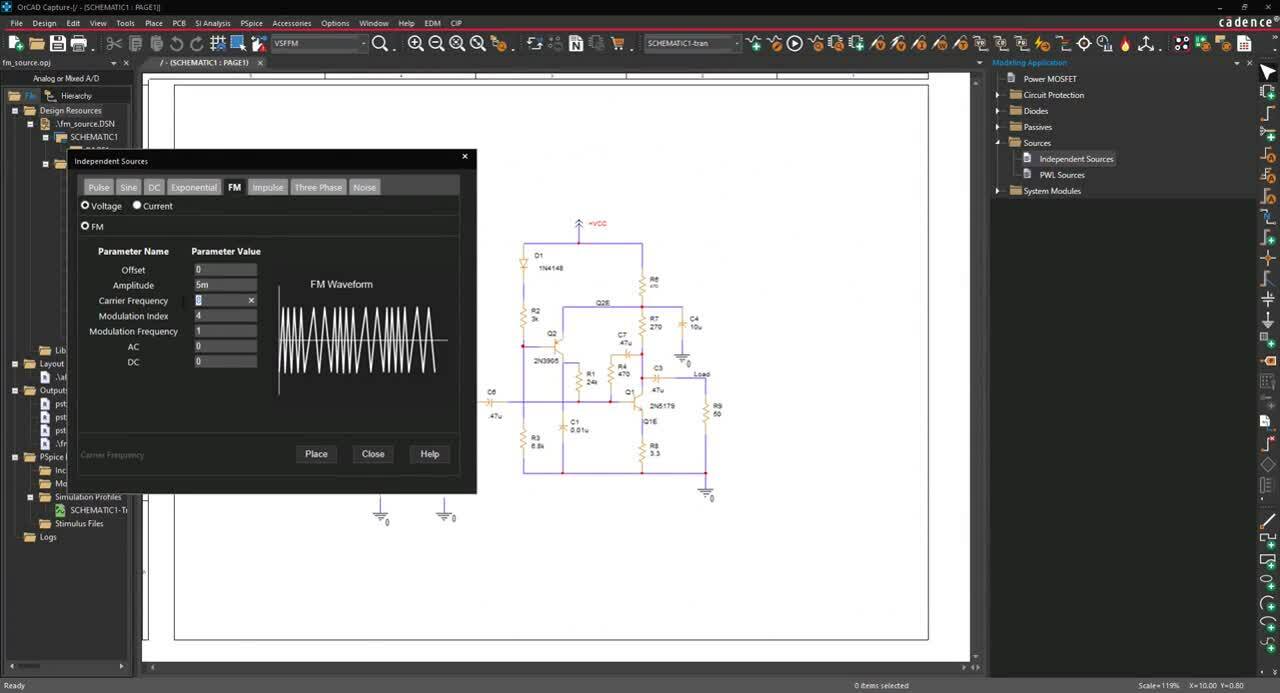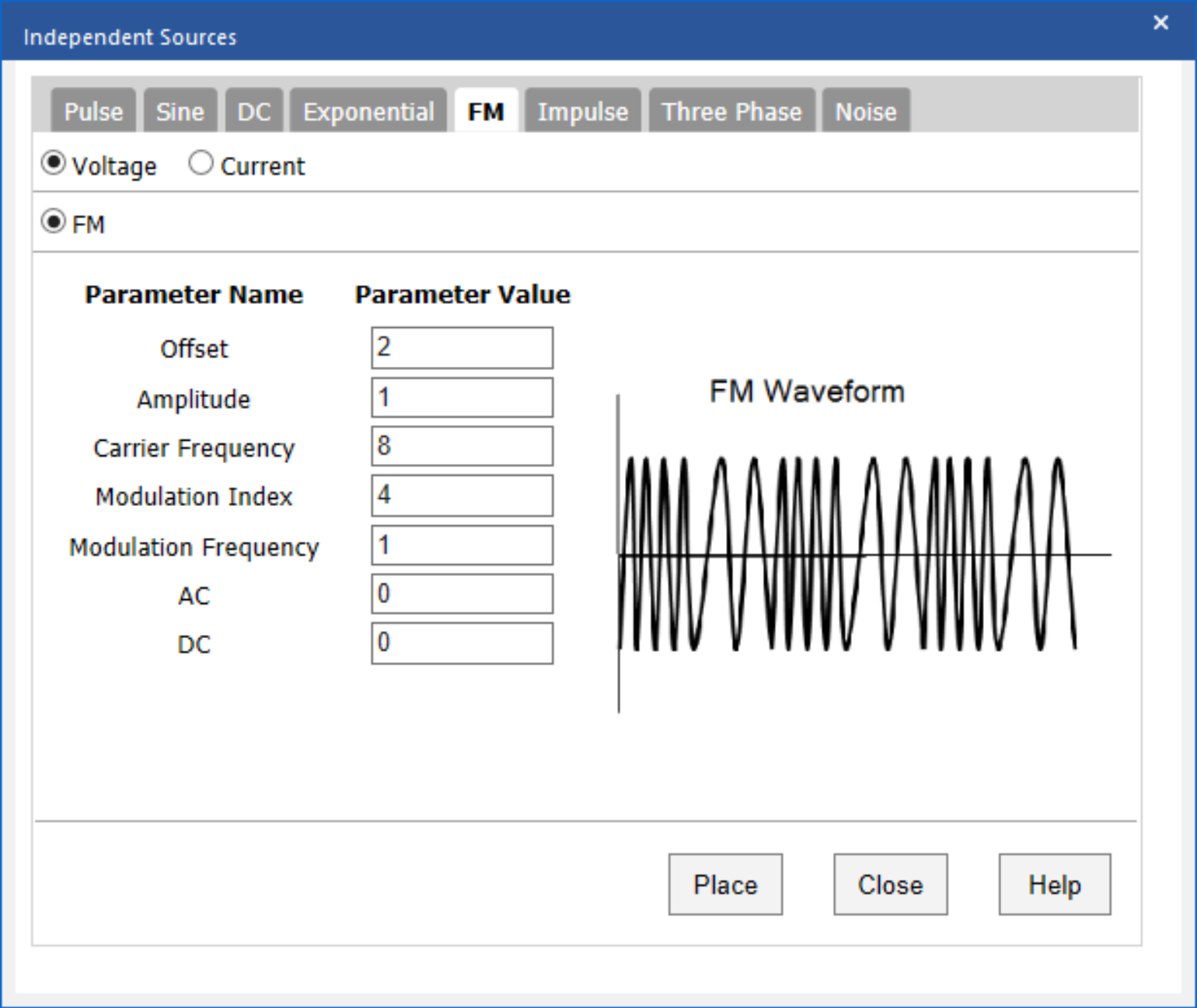
Modeling designs helps engineers verify whether their circuit will function as intended. Modeling programs simulate circuit behavior under different conditions and in accordance with the design requirements, allowing engineers to better plan and build circuits.
Every SPICE simulation needs to have a source or input signal. To analyze how the circuit will behave in real life, this input must be modeled accurately. If not modeled accurately, functionality issues can go undetected until far later in the design process, wasting time and money. To efficiently and accurately create an FM Source SPICE model, the intended input signal must be interpreted by identifying the type and signal values for replication.
What is an FM Source?
A Single-Frequency FM (SFFM) source varies the instantaneous frequency of a carrier wave. A FM source generates a frequency-modulated wave and can be used to analyze communications circuits.
What is Needed to Model an FM Source?
To create the required FM source for simulation, there are two items that must be defined:
- Type
- Which type of signal will be the input for the circuit: voltage or current?
- Data Points
- What are the critical signal values needed to create the desired waveform: carrier and modulation frequencies, amplitude, etc.?
This information must be incorporated into the SPICE simulation model which can be achieved by manually creating or editing a text file. Keep in mind if the source signal created is not the intended outcome, values will need to be edited manually. This manual process to produce the desired source signal is time consuming and increases the likelihood of errors; however, the PSpice Modeling App provides a fast, easily-configurable, and fully-integrated method to create FM sources for simulation.
Creating an FM Source SPICE Model in PSpice
The FM source modeling application quickly creates FM source models with a wizard-based approach. The necessary source specifications are pre-defined and users can easily input desired parameters required for FM sources such as:

- Source Type: Select either a Voltage or Current
- Offset: Specify the offset for the waveform.
- Amplitude: Define the peak voltage or current amplitude of the sine wave.
- Carrier Frequency: Define the frequency of the carrier wave.
- Modulation Index: Define the extent of modulation to the carrier signal by specifying the modulation index.
- Modulation Frequency: Specify the frequency of the modulating signal.
- AC and DC: Quickly specify the AC or DC voltage amplitude to be automatically added to source, achieving the intended AC sweep, bias point, or transient analysis.
Using the inputted information above, the PSpice Modeling App generates a schematic symbol and automatically associates the newly created FM source SPICE model without leaving the OrCAD Capture environment. The PSpice Modeling App also automatically manages the simulation profile configuration, eliminating any library set up for simulation. To try this yourself, be sure to download the Free Trial of OrCAD. Check back for more SPICE model how-tos in this series and get step-by-step instructions for creating an FM source SPICE model in PSpice here.











